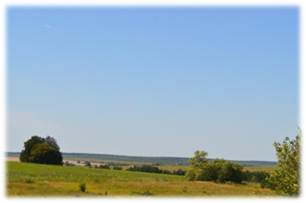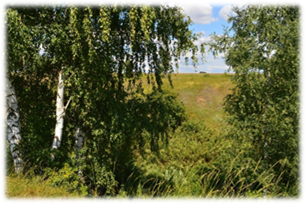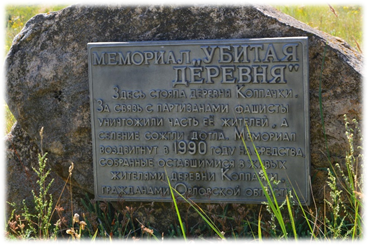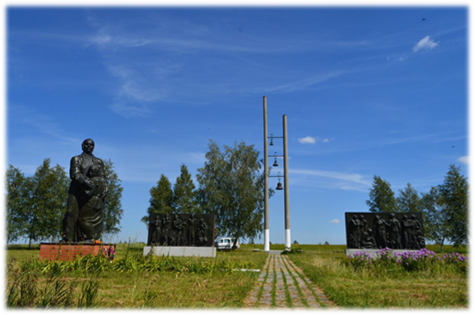
The tragedy of the village of Caps (Kolpachki)
In the endless fields of the Orеl region, in a web of dirt roads, a small village with a funny name Caps was lost. It's good in the village. Birches are rustling, the aroma of various grasses is dizzying, a small river flows along the ravine and, wherever you look, a piercing blue sky and a yellow corn sea.


Only there are no houses in this village. There is no one to hide from the rain and snow, there is no one to draw water in the well, and there is no one to meet the cattle returning from the pasture in the evenings. No cattle. Because, this is a murdered village. There has been no village for more than seventy years. But there is only a memorial "Caps – a murdered village".
And in the midst of this beauty, where people lived before the war, raised children, now there are only birdsong and stones on the site of burned houses with signs on which the names of residents are indicated.

The village of Caps was small. It got its name during the Stolypin reform. The village was located on small hills, and from a distance the thatched roofs of the houses looked like caps on the tops. The inhabitants were engaged in agriculture and crafts. Before the war, they worked on a collective farm.
The village died on February 3, 1942. Having lost several soldiers in battle with the partisans the day before, the fascists arrived in the village and began the massacre. Without warning, they began shooting local residents with machine guns, throwing grenades into houses and cellars. Men were shot, the elderly Anastasia Makarova was burned alive in her home, and several young women were captured and shot after torture. Residents fled into ravines, rescued children. Someone could not escape the bullets. Leaving, the fascists looted property, took cattle, and burned all the houses in the village.
The surviving residents hid in ravines and groves for several more days. Frozen and frightened, they returned to bury the dead. But the women and children did not have the strength to restore the village. The village died.
In 1990, the memorial "Caps – the murdered village" was opened. There is no trace of many villages burned by the Nazis. No one can find where they were now. There is not a single resident to bother about the monument; everyone was killed, wiped off the face of the earth along with the houses. However, the monument in Caps became a monument to all the burned villages and all the inhabitants who died in them. In the center of the composition is a woman with a child. This is the deceased Anastasia Makarova and her surviving granddaughter, whom she was able to save by pushing out of a burning house. Behind the bas-reliefs with scenes of massacre of residents. A tombstone over a mass grave. At the "feet" of the buried is a 2-meter candle made of gray granite. In the center of the once-existing village, there is a high belfry with three bells. And these bells are ringing on the Caps, on Khatyn, on the Sides, on Rositsa, on Gavrilka, on Rubella, and on thousands of other murdered villages.

On the territory of the USSR, the Nazis severely destroyed 1,710 cities and more than 70,000 villages and settlements, more than 6 million buildings and left about 25 million people homeless. According to the Russian historian A. R. Dyukov, "the brutality of the occupation regime was such that, every fifth of the seventy million Soviet citizens who found themselves under occupation did not live to see Victory." Only on the land of one Uritsky district of the Orel region, where there was a village of Kolpachki, out of seven thousand houses available, the Germans burned down almost six thousand. Before the occupation, there were 41,160 inhabitants in the area, in August 1943 there were 25,364.
Материалы на данной страницы взяты из открытых источников либо размещены пользователем в соответствии с договором-офертой сайта. Вы можете сообщить о нарушении.